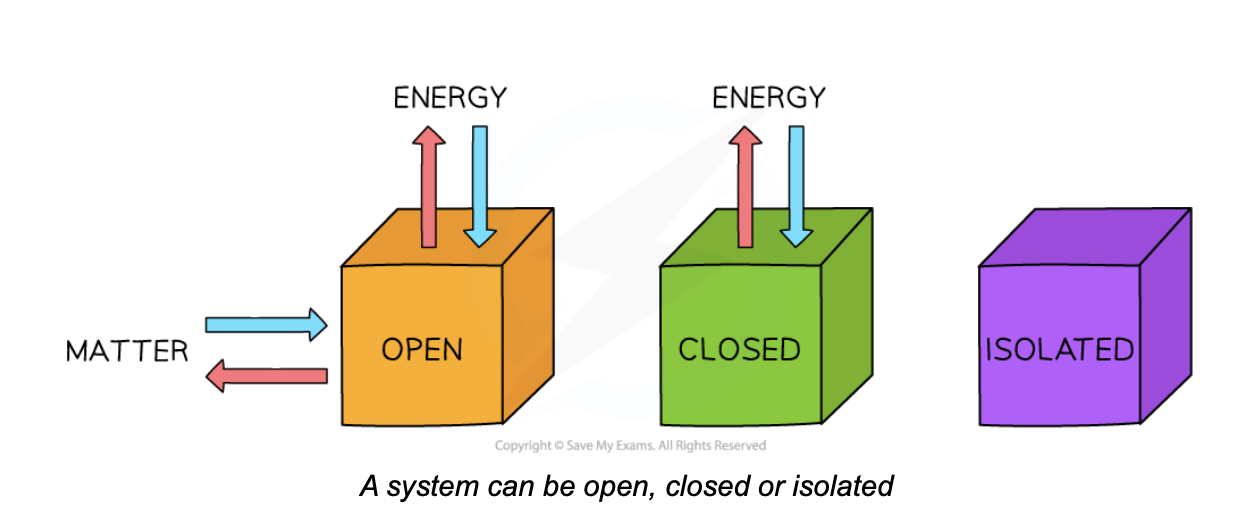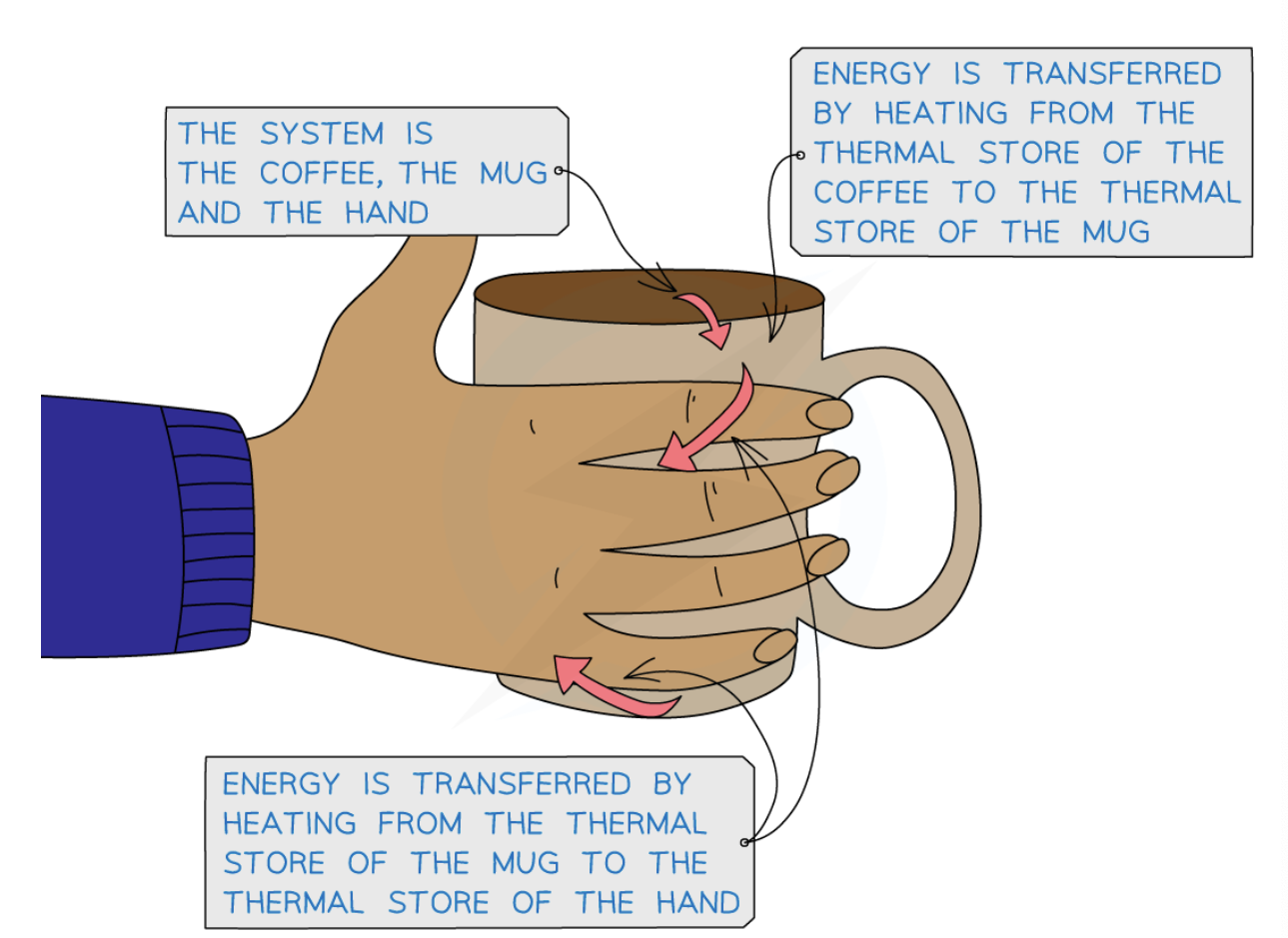energy stores and transfers
1/31
There's no tags or description
Looks like no tags are added yet.
Name | Mastery | Learn | Test | Matching | Spaced |
|---|
No study sessions yet.
32 Terms
define a system
An object or group of objects
What happens when a system is in equilibrium?
When a system is in equilibrium, nothing changes and so nothing happens
What happens when there’s a change in system?
When there is a change in a system, things happen, and when things happen energy is transferred
What is energy measured in?
joules (J)
What are the 3 states of a thermodynamic system?
isolated, closed or open
What can happen in an open system?
An open system allows the exchange of energy and matter to or from its surroundings
What can happen in a closed system?
A closed system can exchange energy but not matter to or from its surroundings
What can happen in an isolated system?
An isolated system does not allow the transfer of matter or energy to or from its surroundings

where is energy stored?
Energy is stored in objects
What happens when a change happens within a system?
When a change happens within a system, energy is transferred between objects or between stores
State the conservation of energy
Energy cannot be created or destroyed, it can only be transferred from one store to another
Describe the total amount of energy in a closed system
This means that for a closed system, the total amount of energy is constant.
Describe kinetic energy stores
Moving objects have energy in their kinetic store
Describe gravitational energy stores
Objects gain energy in their gravitational potential store when they are lifted through a gravitational field
Describe elastic energy stores
Objects have energy in their elastic potential store if they are stretched, squashed or bent.
Describe magnetic energy stores
Magnetic materials interacting with each other have energy in their magnetic store
Describe electrostatic energy stores
Objects with charge (like electrons and protons) interacting with one another have energy in their electrostatic store
Describe chemical energy stores
Chemical reactions transfer energy into or away from a substance's chemical store
Describe nuclear energy stores
Atomic nuclei release energy from their nuclear store during nuclear reactions
Describe thermal energy stores
All objects have energy in their thermal store, the hotter the object, the more energy it has in this store
How many types of energy store is there?
8
List all types of energy stores
kinetic
gravitational
elastic
magnetic
electrostatic
chemical
nuclear
thermal
through what is energy transferred between?
Energy is transferred between stores via transfer pathways
What are the transfer pathways (that we need to know)
Mechanically
Electrically
By heating
By radiation
describe mechanical working transfer pathway. give 4 examples
When a force acts on an object (e.g. pulling, pushing, stretching, squashing)
describe electrical working transfer pathway. give 1 example
A charge moving through a potential difference (e.g. current)
describe heating (by particles) transfer pathway. give 1 example
Energy is transferred from a hotter object to a colder one (e.g. conduction)
describe (heating by) radiation transfer pathway. give 1 example
Energy transferred by electromagnetic waves (e.g. visible light)
describe the energy transfer that occurs when a hot coffee in a mug is heating up cold hands (3)
system - coffee, mug and hand
energy is transferred by heating from the coffee’s thermal store to the mug’s thermal store
energy transferred by heating from mug’s thermal store to hand’s thermal store

what are the 3 steps in describing an energy transfer?
Step 1: Determine the store that energy is being transferred away from
Step 2: Determine the store that energy is transferred to
Step 3: Determine the transfer pathway
describe the energy transfer that occurs when a battery powers a torch (4)
The system is the battery and torch, so the energy transfer to focus on is from the battery to the bulb.Therefore, the energy begins in the chemical store of the cells of the battery
When the circuit is closed, the bulb lights up. Therefore, energy is transferred to the thermal store of the bulb.
Energy is transferred by the flow of charge around the circuit. Therefore, the transfer pathway is electrical.
Energy is transferred electrically from the chemical store of the battery to the thermal store of the bulb
describe the energy transfer that occurs when a ball is falling (8)
For a ball falling, the system is defined as the ball
In order to fall, the ball must have been raised to a height
Therefore, it began with energy in its gravitational potential store
As the ball falls, it is moving
Therefore, energy is being transferred to its kinetic store
For an object to fall, a resultant force must be acting on it, and that force is weight and it acts over a distance (the height of the fall)
Therefore, the transfer pathway is mechanical
Energy is transferred mechanically from the gravitational potential store of the ball to the kinetic store of the ball